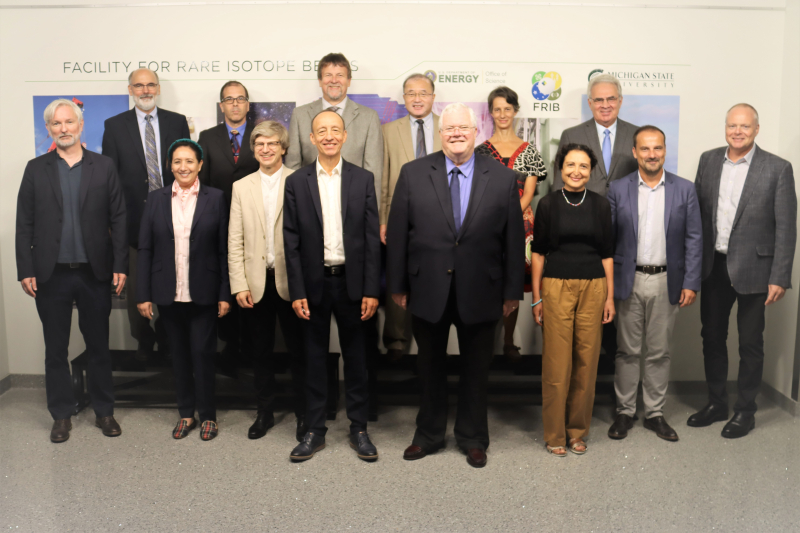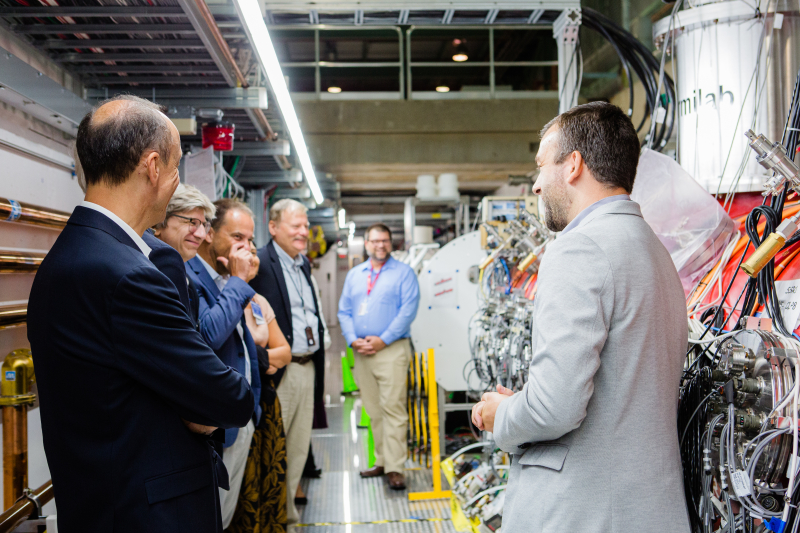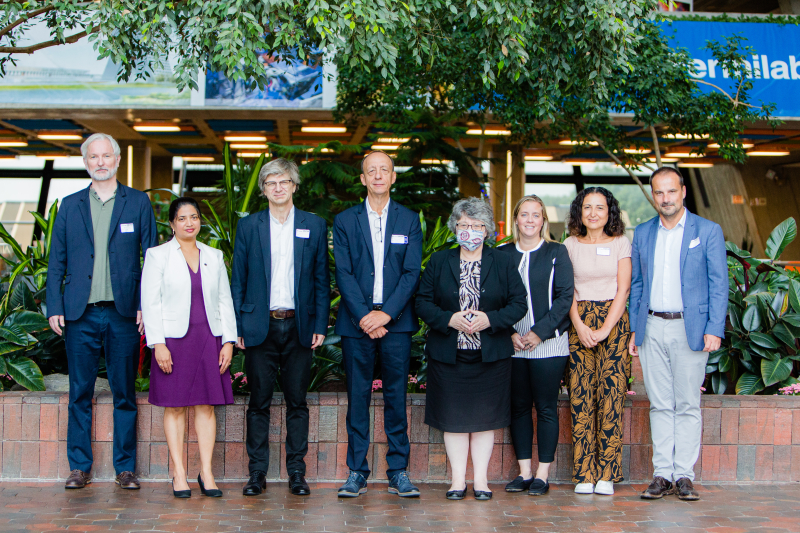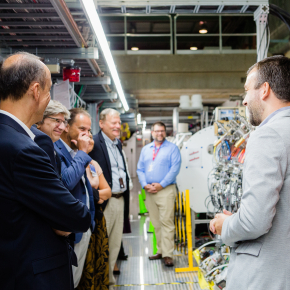IN2P3 delegation visits Fermilab and FRIB in the USA
A five-member delegation of IN2P3 led by IN2P3 director Reynald Pain, met at the end of the summer with the management of the brand-new nuclear physics Facility for Rare Isotope Beams (FRIB). They then met with the new management of the Fermi National Accelerator Laboratory (Fermilab) which hosts the PIP-II accelerator and the DUNE international neutrino project, in which France has made major contributions.
After recently meeting with several partners in Paris, and then visiting Japan in June, the sanitary situation allowed an IN2P3 delegation composed of IN2P3 director Reynald Pain, deputy director Berrie Giebels, and scientific deputy directors Marcella Grasso, Arnaud Lucotte and Laurent Vacavant to return to the United States and strengthen their links with their American partners.

On 31 August, the delegation visited the brand new Facility for Rare Isotope Beams nuclear physics facility at Michigan State University (MSU) dedicated to the study of exotic nuclei and met there by FRIB director Thomas Glasmacher and his management team, as well as by Tim Hallman, Associate Director for Nuclear Physics at the Department of Energy (DOE) and two of his collaborators in charge of international collaborations. French and FRIB nuclear physicists have been collaborating for years and the launch of the FRIB programme is an opportunity to strengthen their relationship. Both partners expressed their willingness to go in this direction during the discussions, which focused on the scientific programme of FRIB, SPIRAL2 project, the complementarity between FRIB and GANIL, instrumental developments of common interest, nuclear astrophysics and theoretical physics. These discussions will continue and the next steps will be identified more precisely in the coming months.

The delegation then visited Fermilab on 2 September, the first return of the extended management to the laboratory since the health crisis. The new laboratory director Lia Merminga and her management team, as well as Whitney Begner, deputy director of the Fermi site office at DOE welcomed the visitors. Main topics were the flagship projects PIP-II and DUNE, in which France has major contributions, but discussions also covered collaborative activities on the LHC, R&D for accelerators, theory, computation, artificial intelligence and quantum technologies. The delegation also met via videoconference with Harriet Kung, deputy director for science programs at DOE and acting director for high-energy physics at DOE. The visit to the Fermilab research facilities was an opportunity for IN2P3 to witness the progress of the neutrino experimental programme at FNAL, the PIP-II accelerator project and developments related to magnets for the HL-LHC, superconducting cavities and quantum technologies.

